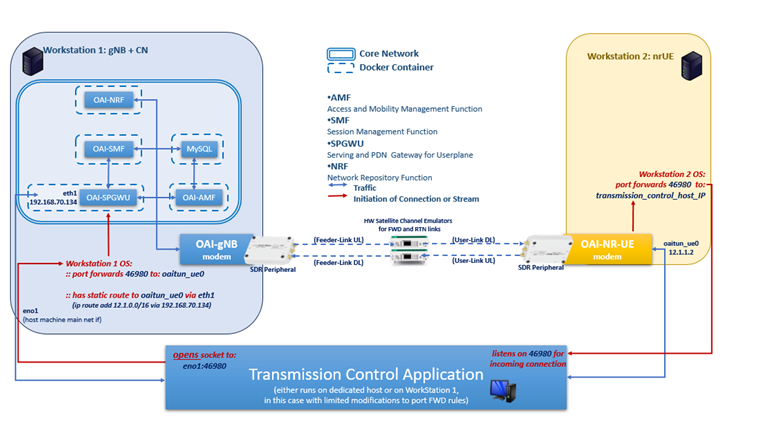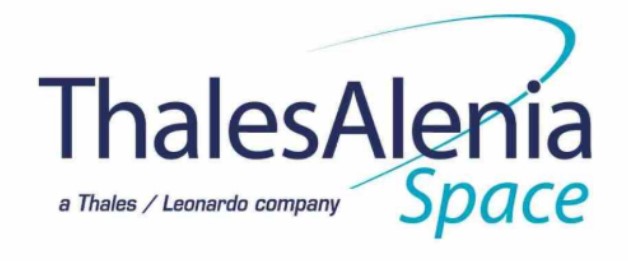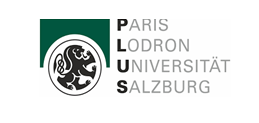
-
StatusCompleted
-
Status date2025-09-16
-
Activity Code3C.018
The European Rail Traffic Management System (ERTMS) is an initiative supported by the EU, to improve safety and increase interoperability of rail transport in Europe through a Europe-wide standard for train command and control, replacing existing national systems. ERTMS consists of the European Train Control System (ETCS), an automatic train protection system providing in-cab train control; and GSM-R, a radio system based on the Global System for Mobile Communications (GSM) for voice and data communications between the train and trackside.
Satellite Air Interface for Railway Control Communications (SAIRCC) is an ESA Advanced Research Telecommunications Systems (ARTES) Advanced Technology (AT) project, aimed at studying, evaluating and demonstrating the performance of a satellite component of the future railway mobile communication system (FRMCS), evolution of the Global System for Mobile Communications – Railway (GSM-R) (or able to complement it), with particular focus on ERTMS/ETCS on-board applications.
The project developed and validated a prototype of the resulting air interface in a Software Defined Radio (SDR) platform through realistic packet-level simulations. To ensure future-proofing of the developed solution, the project has included investigation of published train traffic growth rates and generation, from train schedules, of Future Railway Mobile Communication System (FRMCS) message tables for different scenarios to derive capacity assessments.
The analysis has included a total of 3M+ trains in the European passenger and freight fleets. The analysis paid attention to the performance of the radio system for use in highly critical signalling application and extended to assess the suitability of the solution for broadband applications, which require higher capacity but yield milder availability requirements. Overall system capacity to support European needs has been estimated to amount between 1 to 12 GHz, depending on targeted service levels. To support the widest possible coverage of railway lines, special attention has been paid to interoperability with ground communication infrastructure (specifically with 5G-NR terrestrial networks).
Following main challenges/risks were identified/faced during project development:
- Different risk impacts and risk event probabilities were associated with the choice of candidate air interfaces and associated maturity level or development roadmaps during early project stages;
- No pre-existing or reference implementation available for the PHY layer (OSI-L1) of any of the candidate air interface standards;
- Developing the full air interface stack from scratch not viable within project scope;
- Adapting pre-existing L2 simulator heritage challenging, due to architectural, interface and – especially – computational performance limitations.
In the latest years the obsolescence and saturation risk of the current terrestrial communication system (GSM-R) has clearly been identified and is expected to materialise somewhere around 2030. Therefore, both ESA and the Shift2Rail initiative are strongly investigating and working towards the demonstration of alternative communication solutions. The system definition proposed by the SAIRCC Consortium has been formulated precisely to answer these needs.
Furthermore, the implementation on the target platform has allowed for verification of the identified requirements, validating the benefits of the solution. Additionally, compared to a traditional one, the life cycle cost of such a system is much lower, including the required investment to customise and certify the system itself.
The implemented RCCD system supported an extensive campaign of test-transmissions which provided experimental evidence of useful significance for the assessment of the project results and design choices.
Particularly, a 60kHz-SCS version of the NTN Open Archives Initiatives (OAI) codebase was developed and extensively tested on a set of eight different channel scenarios by executing a total of 50 test cases, aimed at assessing the impact of the relevant channel impairments both individually and jointly, in realistic combinations.
The user can set the simulation parameters for all system components, select a source for data traffic, start/stop the simulation and collect data for final analysis. All tested channel effects and their combinations were derived from assessments of the expected railway channel conditions previously carried out within SAIRCC.
The SAIRCC Railway Control Communication Demonstrator (RCCD) is an end-to-end real time testbed testing the performance of the 5G NTN-based SAIRCC air interface for railway control communication, over a SW-emulated, non-regenerative GEO satellite. As for any real communication architecture, within the performed test transmission sessions, the UE component represents the system end located on-board the train.

The RCCD general architecture comprises four main functional components:
- Transmission Control Application, which oversees controlling the whole test transmission process, injecting, collecting and checking the test traffic and offering a user interface.
- A SDR workstation implementing the NR gNodeB component, hosting the NR Core Network (CN) and, optionally, interfacing to the actual radio spectrum through an SDR peripheral.
- A SDR workstation implementing the NR UE component and, optionally, interfacing to the actual radio spectrum through another SDR peripheral of the same type as that of gNodeB.
A satellite channel emulator implemented by RCCD’s software baseband and applying, on both the forward and return links, the channel impairments typical of radio propagation over a transparent, non-regenerative geostationary orbit (GEO) satellite.
SAIRCC started in June 2020 and concluded in August 2025. The project comprised seven main tasks:
- Scenarios and Requirements;
- Traffic Characterisation and System Capacity Analysis;
- Air Interface Design and Test Plan;
- Air Interface Simulator and Test Report;
- Demonstrator Requirements, Architecture, Design, Test Plan and User Manual;
- Railway Control Communications Demonstrator (RCCD) development;
- Validation Report.
Completed.







